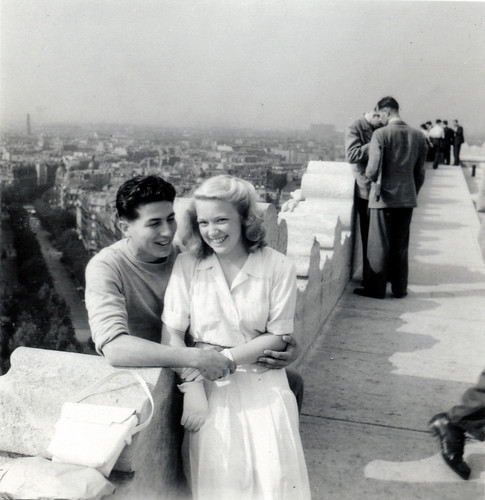
It happens in a lot of plays. You need a photograph, either in a frame or not. Maybe it’s part of the story, or the designer just wants it as set dressing. First you need to do all your homework on the photograph, just as you would any other prop. Look for all the clues you can in the script; you don’t want to bring the perfect picture of a child on a beach only to have the actor in the following scene recite the line, “he used to love going to the mountains.”
Is the photograph of someone in the cast or someone who never appears? You have more options if the person in the photograph never appears on stage, and you don’t have to match his or her appearance to an actors. Either way, you have a number of options for getting a photograph onto the stage.
Have one of the actors bring a photograph in
If the photograph is supposed to be of the actor as a younger person, the most realistic option is to have the actor bring an older photo of him or herself. If possible (and it should be possible in your prop shop), you should scan the original photograph and make your own prints. This will keep the actor’s irreplaceable memories from becoming damaged or lost during the production, and will give you the option of resizing it if necessary.
Using an actor’s photograph will also work if the photograph needs to be of the character’s close relative. An older photograph of the actor can be his child or younger brother. Likewise, an actor can use a photograph of her own father for the character’s father.
Take your own photograph
If you know early enough in the process that you will need a photograph of one or more of the actors, you can schedule a photo shoot with them. You can even work with the costume designer and other production people. You will need to talk to your production manager about this, since it will involve other departments, and there are rules governing the photographing of Equity actors during a production.
You can also take pictures of other people at the theatre or your friends and family if they have the right look. You may also wish to approach strangers you see or hire someone to pose for you, though for most productions, this does not make the most sense of time and money.
Use a found photograph
You can find old and anonymous photo albums at flea markets, on eBay, or any of the other usual sources for abandoned objects. Books and magazines are other great sources. Just like borrowing an actor’s photograph, it is a good idea to scan these and print new copies for your play.
You can also, obviously, search for images online. I described a lot of these techniques in my previous article, “How to research.” Found photography can be tricky. The problem is you often want amateur photography rather than professional photography. You also don’t want to use famous or well-known people in a photograph if the subject is meant to be unknown. Amateur photographs of unknown people are much less organized and searchable. In a lot of cases, you just have to luck onto a huge group of potential images and browse through every single one to find the perfect shot.
If you search for “found photographs” on Google, you can easily get sucked in for hours looking at pictures from all decades. At this point I should remind everyone that I am not a lawyer, and while this article tells you how you can find images for your production, I make no claim as to whether you can use them or not. Defer to your production manager, or whoever is in charge of the legal aspects of the show.
Create a composite
If you can’t find or make the perfect photograph for your production, you can combine two or more photos together. You can combine two or more people together, or put people in front of a different background. Before computer-editing software, you could literally cut and paste the photographs together, and then rephotograph the result. It is much more elegant and efficient to do this nowadays on a computer, and it will behoove you to learn how or find people you can delegate this to.
Alter any of the above
If you scanned in the photograph you made or acquired from any of the above methods, you can manipulate it in the computer. You can turn it into black and white or sepia-toned. You can also print it out and use any of your favorite paper-ageing or distressing techniques.





A great source of photos to use in productions is stock photography. A library like iStockphoto has literally millions of images to choose from, and you can specify your parameters. So if you need vintage or modern or landscapes or cityscapes or pastoral images or what have you, you can do a search and find just what you need. The best part is that when you buy from there, you have a legal license to use the images, which may not be true of images simply found on the internet.
Love this blog! I use a lot of props in my work, and I’m learning more everyday about prop design and fabrication. Thanks!